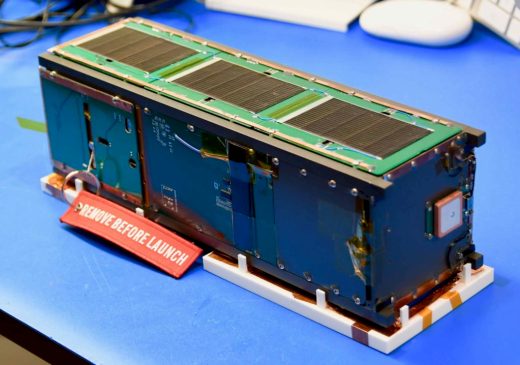A sampling of links to recent space policy, politics, and government (US and international) related space news and resource items that I found of interest:
- Apollo 11 and the future of spaceflight:
- NASA’s Next 50 Years – The New Atlantis
- How landing on the moon hurt America’s space program – mashable.com
- Ben Shapiro: America ‘less ambitious’ about space travel in 50 years since Apollo 11 launch | Fox News
- Op-ed | Why we’re not on the moon now (and how we can stay next time we go) – Rick Tumlinson/SpaceNews.com
- Space law:
- Space regulations:
- SLS/Orion:
- NASA lunar program:
- Artemis cost estimate won’t be ready until 2020 – SpaceNews.com
- Trump and NASA’s Uncertain Moon Plans – The Atlantic
- What Lessons Can JFK’s Pledge to Reach the Moon Provide for Trump? | Observer
- Lori Garver: Forget new manned missions in space. NASA should focus on saving Earth. – The Washington Post
- NASA management:
- Commercial partnerships:
- Orbital traffic:
- US state space:
- Brownsville’s Growing Role In The Modern Space Race | Texas Standard
- How Clear Lake was developed around NASA – Click2Houston.com
- Marquette explains hopes for spaceport | News, Sports, Jobs – Daily Press
- Why the Apollo missions made Florida synonymous with space – National Geographic
- Adams County Wants To Bring Big Space Business To Its Spaceport – CBS Denver
- Space tourism project boosting to higher orbit in Lompoc – KEYT
- Space advocacy:
- US military space:
- Delta 4 launch delayed as ULA probes supplier concern – Spaceflight Now
- Space Force: What Is It Good For? – Breaking Defense
- Space Force legislative talks at impasse over personnel issues, cost concerns – SpaceNews.com
- House Armed Services Committee denies funding for Space Development Agency – SpaceNews.com
- Commercial Satellites: Will They Be Military Targets? – Breaking Defense
- International Space
- Canada:
- China:
- Europe:
- India:
- Japan:
- Russia:
- UAE:
- UK:
- U.K. deepens space ties with U.S., announces investments in small satellites, responsive launch – SpaceNews.com
- Moon landing links to Scotland highlighted by VisitScotland map – The National
- ‘Double the space budget to make Britain a world leader’ – The Times
- Virgin confirm 2020 vision for Spaceport Cornwall – CornishStuff.com
Webcasts:
** Back to the Moon: This Time to Stay? – SETI Institute. The first of two public seminars on NASA’s Artemis lunar program.
… Greg Schmidt, Director of the Solar System Exploration Research Virtual Institute (SSERVI), and Michael Sims, CEO, and founder of Ceres Robotics will present this first talk.
Greg leads NASA’s lunar exploration research program and will give us an update on Artemis. Michael, an expert on AI and robotic exploration, will describe the activities of Ceres Robotics in the exploration of the Moon and the understanding of its geology and surface properties. After a short presentation, both speakers will participate in a discussion about the past, present, and future of lunar exploration moderated by David Morrison, Senior Scientist at SSERVI and former director of the Carl Sagan Center at the SETI Institute.
** July 16, 2019 Zimmerman/Batchelor podcast | Behind The Black
** Episode T+126: The NASA Ousters – Main Engine Cut Off
** The Space Show – Tue, 07/16/2019 – Douglas Messier talked about Virgin Galactic, “human spaceflight, NASA key personnel changes, congressional funding for NASA, SpaceX, Blue Origin and much more”.
====

====





